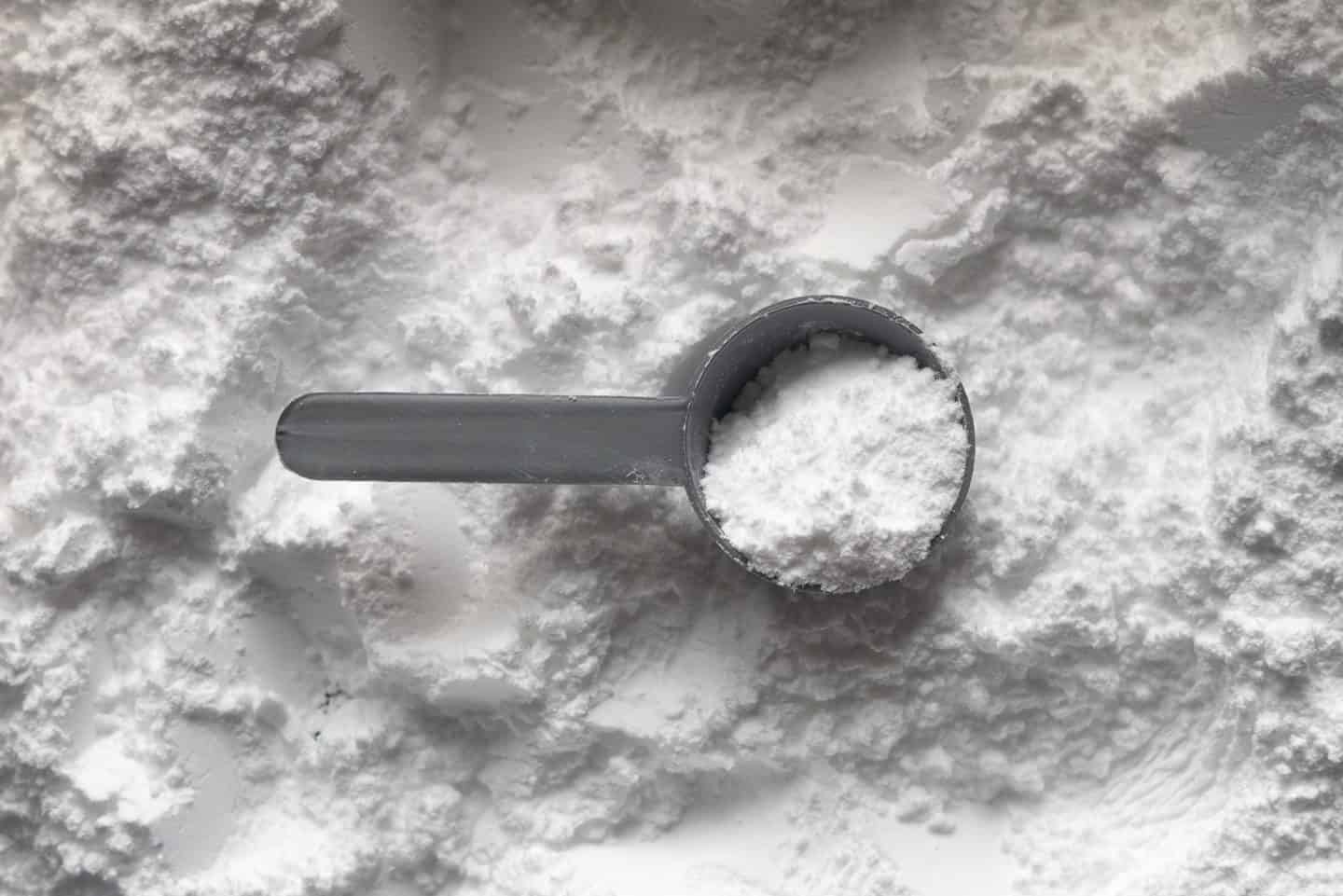The most popular dietary supplement after protein shakes is undoubtedly creatine. Creatine is available in various types and forms. There’s creatine monohydrate, creatine phosphate, and creatine citrate. In recent years, a variant has emerged, namely creatine ethyl ester, also known as CEE. In this post, we want to answer the question: what is the best creatine?
What does creatine do?
Regardless of whether it’s monohydrate, phosphate, CEE, or citrate, creatine fundamentally does the same thing. It delivers more creatine to the muscles, increasing strength and endurance. Creatine achieves this by attracting water into the muscle cell. This is primarily why athletes who use creatine supplements often gain weight quickly and sometimes appear ‘puffy’. Additionally, it promotes glycogen storage in muscle cells, which is the main source of energy for muscles. Finally, creatine increases the secretion of IGF-1, also known as Insulin-Like Growth Factor. This is the natural anabolic hormone produced in the muscles themselves. The increase in this secretion can have a positive effect on muscle growth.
Who is creatine suitable for?
The popularity of creatine mainly comes from the fitness world. In this sport, there’s a need for short and explosive movements, making creatine extremely suitable. But athletes in other sports can also benefit from this dietary supplement. For example, if you play soccer, creatine can help with the explosive power needed for sprinting. This applies to people involved in basketball, handball, or hockey as well. Additionally, creatine can be useful in various combat sports such as kickboxing, Muay Thai, and boxing. Even if you don’t engage in sports, using this supplement could make you feel more energetic as it reduces muscle stiffness.
Creatine Monohydrate
Monohydrate is the oldest and most well-known variant of this popular supplement and has a water connection: 88% of creatine monohydrate consists of creatine and 12% consists of water. Most studies have been conducted on this supplement to prove or refute its effects.
Creatine Phosphate
In addition to a water connection, creatine can also bind with phosphate. This may improve absorption compared to the monohydrate variant since monohydrate is converted into phosphate in the muscles. Creatine phosphate is therefore more expensive than the monohydrate variant.
Creatine Citrate
The third variant is citrate, which has become popular due to its better solubility. It contains the least amount of creatine per 1 gram and is also the most expensive form, with only 400 milligrams per 1 gram.
Creatine Ethyl Ester
When creatine monohydrate is linked to an ester, it is referred to as creatine ethyl ester, also known as CEE. The biggest advantage of CEE is that it can be absorbed more quickly by the body because the creatine is better absorbed by the esters added. An ester is a special substance. An ester is an organic acid that forms when it reacts with alcohol. Examples of organic acids include acetic acid and malic acid. This offers advantages in terms of absorbability. Often, a loading phase with creatine is also not necessary. The main drawback of creatine ethyl ester is mainly the price.
What is the best creatine?
This brings us to the conclusion, what is the best creatine? The answer to that question is very personal because there are different types of this popular supplement. Due to the wide variety available, the effects can also vary from person to person. If you want to start using creatine, we recommend starting with a regular monohydrate. If you achieve successful results with it, you can then assess how you respond to the other forms of creatine available.

